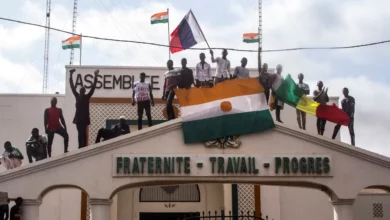A recent poll by a research center says that most Egyptians do not support protests by anti-regime demonstrators outside the Muslim Brotherhood’s headquarters and demonstrations by Islamist protesters outside Media Production City.
The Egyptian Center for Public Opinion Research (Baseera) has found that 74 percent objected to protests outside the Brotherhood's Guidance Bureau in Moqattam earlier this month, which devolved into clashes between demonstrators and Brotherhood youths, as well as assaults on reporters. Only 14 percent supported the demonstrations.
The survey also reported that 12 percent of respondents were undecided.
Younger respondents between ages 18-29 showed higher approval rates, at 19 percent, compared to those older than 50, among whom the approval rate was 10 percent.
Support is also higher among those who are more well-off, 17 percent of whom supported the demonstrations, compared to those at lower economic levels, whose support rate was 11 percent.
Residents of urban areas were also more tolerant of the protests, with 18 percent approval rates, compared to 14 percent among those living in Lower Egyptian provinces and 10 percent in Upper Egyptian areas.
However, only 8 percent of the population total approved of the protests outside Media Production City, with 78 percent opposed and 14 percent not sure. The protests were staged by Islamists condemning what they described as biased reporting on them by private satellite channels, and some media personnel were reportedly harassed during the demonstrations.
The poll also reported no differences among respondents based on educational background, though approval decreased with age. Eleven percent of those aged 18-29 approved of the protests, compared to only 7 percent of those aged 50 and over.
The percentage of those supporting the protests in lower income brackets was only 6 percent, while it was 13 percent among wealthier respondents.
Eleven percent of urban residents supported the Media Production City protests approved to the sit-in by 11 percent, compared with 8 percent among those in Lower Egypt and 6 percent of Upper Egyptian residents.




